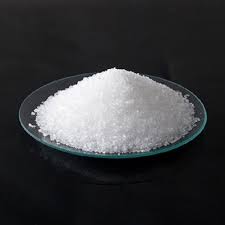Gaucher Disease Therapeutics Market Growth, Future Prospects & Competitive Analysis, 2024-2032
Browse the full report at https://www.credenceresearch.com/report/global-gaucher-disease-therapeutics-market
Market Overview
The global Gaucher disease therapeutics market has witnessed significant growth over the past decade. The market is driven by several factors, including the rising prevalence of Gaucher disease, increased R&D activities, and the availability of advanced therapies. According to recent estimates, Gaucher disease affects approximately 1 in 40,000 to 1 in 60,000 individuals globally. However, in certain populations, such as the Ashkenazi Jewish community, the prevalence is significantly higher, with about 1 in 850 individuals affected.
The market is segmented based on treatment type, including enzyme replacement therapy (ERT), substrate reduction therapy (SRT), and others. ERT is currently the most widely used treatment option, with drugs like Cerezyme (imiglucerase) and Vpriv (velaglucerase alfa) dominating the market. SRT, which includes drugs like Cerdelga (eliglustat), is also gaining traction as a viable alternative, especially for patients who may not respond well to ERT.
Key Market Drivers
1. Rising Prevalence and Diagnosis Rates: With the advent of more sophisticated diagnostic tools and increased awareness among healthcare professionals and patients, Gaucher disease is being diagnosed more frequently. This has led to an increase in the number of patients seeking treatment, thereby driving market growth.
2. Advancements in Treatment Options: The introduction of novel therapies, such as gene therapy and personalized medicine, has opened new avenues for the treatment of Gaucher disease. These advancements are expected to provide more effective and targeted treatment options, thus boosting market growth.
3. Increased R&D Activities: Pharmaceutical companies and research institutions are investing heavily in R&D to develop new and improved therapies for Gaucher disease. This has led to the introduction of several new drugs in the market and the expansion of the existing therapeutic pipeline.
4. Government Support and Initiatives: Governments and non-profit organizations are playing a crucial role in raising awareness about Gaucher disease and providing support for research and treatment. Various initiatives aimed at improving access to treatment and reducing the cost burden on patients have also contributed to market growth.
Challenges and Restraints
While the Gaucher disease therapeutics market is poised for growth, it is not without challenges. One of the primary challenges is the high cost of treatment. Enzyme replacement therapy, for instance, can cost upwards of $200,000 per year, making it unaffordable for many patients, particularly in low- and middle-income countries. Additionally, the rarity of the disease poses challenges in terms of conducting large-scale clinical trials and obtaining regulatory approvals.
Another significant challenge is the limited availability of treatment options in certain regions. While North America and Europe are well-established markets for Gaucher disease therapeutics, access to treatment in regions like Asia-Pacific, Latin America, and Africa remains limited. This disparity in access is a major barrier to market growth in these regions.
Regional Insights
North America currently holds the largest share of the Gaucher disease therapeutics market, followed by Europe. This dominance can be attributed to the presence of well-established healthcare infrastructure, high awareness levels, and the availability of advanced treatment options. The Asia-Pacific region, however, is expected to witness the fastest growth during the forecast period. This growth is driven by increasing healthcare spending, rising awareness, and the growing focus of pharmaceutical companies on expanding their presence in emerging markets.
Future Outlook
The future of the Gaucher disease therapeutics market looks promising, with several new therapies expected to receive regulatory approval in the coming years. Gene therapy, in particular, holds immense potential for revolutionizing the treatment landscape. Additionally, the increasing focus on personalized medicine and the development of therapies tailored to individual patient needs is expected to further drive market growth.
Key Players
- Novartis AG (Switzerland)
- Johnson & Johnson Private Limited (U.S.)
- Teva Pharmaceutical Industries Ltd. (Ireland)
- Merck and Co., Inc. (U.S.)
- Allergan (Ireland)
- Pfizer Inc. (U.S.)
- GlaxoSmithKline plc (U.K.)
- Sanofi (France)
- Merck KGaA (Germany)
- Abbott (U.S.)
- Boehringer Ingelheim International GmbH. (Germany)
- Takeda Pharmaceutical Company Limited (Japan)
- Amicus Therapeutics, Inc. (U.S.)
- Moderna, Inc. (U.S.)
- Greenovation Biotech GmbH (Germany)
- Biomarin (U.S.)
- JCR Pharmaceuticals Co., Ltd (Japan)
- ISU ABXIS (South Korea)
- Idorsia Pharmaceuticals Ltd (Switzerland)
- AVROBIO, Inc. (U.S.)
- Resverlogix Corp. (Canada)
- Enzyvant (U.S.)
- CHIESI Farmaceutici SpA (Italy)
- Others
Segmentation
By Therapy Type
- Enzyme Replacement Therapy (ERT)
- Recombinant Enzymes
- Long-Acting ERT
- Novel ERT Formulations
- Substrate Reduction Therapy (SRT)
- Pharmacological Chaperones
- Substrate Inhibitors
- Gene Therapy
- Viral Vector-Based Gene Therapy
- Non-Viral Gene Therapy
- Supportive Therapies
- Symptomatic Treatment
- Nutritional Support
By Route of Administration
- Intravenous (IV) Administration
- Oral Administration
By End-User
- Hospitals and Clinics
- Specialty Clinics
- Home Care Settings
By Region
- North America
- U.S
- Canada
- Mexico
- Europe
- Germany
- France
- UK
- Italy
- Spain
- Rest of Europe
- Asia Pacific
- China
- Japan
- India
- South Korea
- South-east Asia
- Rest of Asia Pacific
- Latin America
- Brazil
- Argentina
- Rest of Latin America
- Middle East & Africa
- GCC Countries
- South Africa
- The Rest of the Middle East and Africa
- North America
- Enzyme Replacement Therapy (ERT)
Browse the full report at https://www.credenceresearch.com/report/global-gaucher-disease-therapeutics-market
About Us:
Credence Research is committed to employee well-being and productivity. Following the COVID-19 pandemic, we have implemented a permanent work-from-home policy for all employees.
Contact:
Credence Research
Please contact us at +91 6232 49 3207
Email: sales@credenceresearch.com




Comments
Post a Comment